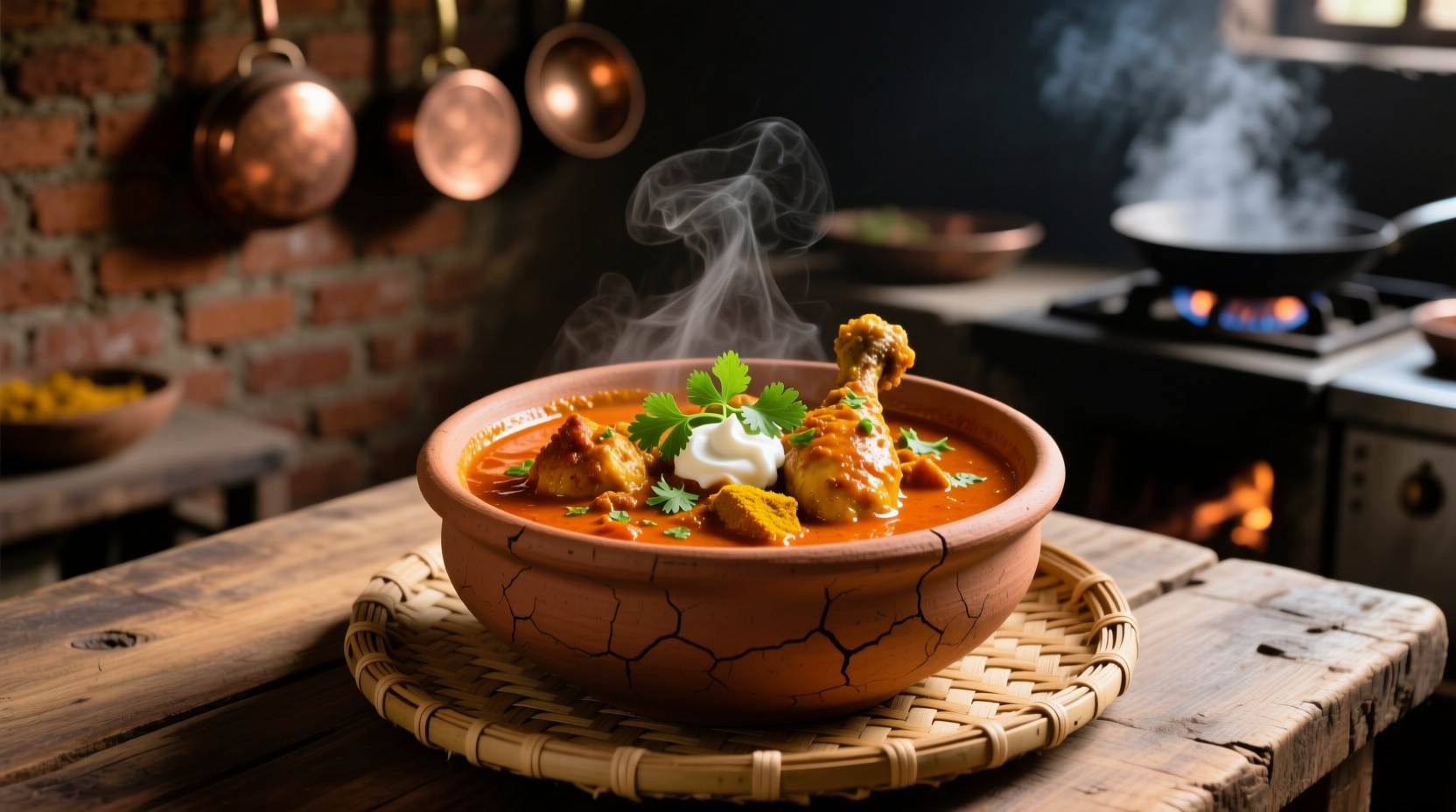Ever wondered what makes chicken tikka masala the world's most beloved Indian-inspired dish? That first spoonful delivers a symphony of flavors that has captivated palates globally. This iconic dish combines tender, char-grilled chicken pieces in a velvety tomato-cream sauce that's neither overwhelmingly spicy nor blandly mild—it strikes that perfect balance that keeps you reaching for more.
The Core Flavor Profile: What You Actually Taste
When you take your first bite of authentic chicken tikka masala, you'll immediately notice three distinct layers working in harmony:
- Creamy richness from yogurt and cream that coats your palate
- Tomato tang providing a subtle acidic backbone
- Warm spice complexity that builds gradually without overwhelming heat
Unlike many assume, chicken tikka masala isn't primarily about heat. The signature warmth comes from Kashmiri chilies (notoriously mild but deeply flavorful) rather than intense heat sources. The garam masala blend—typically containing cardamom, cloves, cinnamon, and cumin—creates that distinctive aromatic warmth that lingers pleasantly after each bite.

Texture: The Unsung Hero of the Experience
The texture experience is equally important to understanding what chicken tikka masala tastes like. The dish features:
- Tender, slightly smoky chicken pieces from the traditional tandoor oven preparation
- A sauce with luxurious, velvety consistency that clings perfectly to rice or naan
- Subtle graininess from properly ground spices that adds dimension without being gritty
When prepared authentically, the sauce shouldn't be overly thick or paste-like—it should have enough body to coat the back of a spoon while maintaining a silky smoothness that makes each bite satisfyingly rich without feeling heavy.
How It Compares: Understanding Flavor Context
Many people confuse chicken tikka masala with similar Indian dishes. This comparison table clarifies key differences:
| Dish | Heat Level | Sauce Base | Signature Flavor Notes |
|---|---|---|---|
| Chicken Tikka Masala | Mild (2/10) | Creamy tomato | Warm spices, subtle sweetness, smoky undertones |
| Butter Chicken | Very mild (1/10) | Tomato-cream with butter | Richer, sweeter, less complex spice profile |
| Chicken Vindaloo | Hot (8/10) | Vinegar-based | Sharp acidity, pronounced heat, bold spices |
The Evolution: How This Dish Developed Its Distinct Taste
Understanding chicken tikka masala's flavor requires knowing its fascinating history. Contrary to popular belief, this dish isn't ancient Indian cuisine but rather a brilliant culinary adaptation:
- 1960s: Created in British curry houses to appeal to Western palates unfamiliar with traditional Indian heat levels
- 1970s-80s: Incorporated cream and tomato soup for consistent texture and milder flavor profile
- 1990s-present: Refined with authentic Indian spices while maintaining the creamy texture Westerners loved
According to food historian Peter Grove's research at the University of London (School of Advanced Study), the dish evolved specifically to bridge culinary traditions, explaining its balanced flavor profile that avoids extreme heat while maintaining complexity.
Why the Flavor Works: The Science Behind the Taste
The magic of chicken tikka masala's flavor comes from precise ingredient chemistry:
- Tomato-cream base creates emulsion that carries fat-soluble spice compounds
- Yogurt marinade tenderizes chicken while adding subtle tang that balances richness
- Garam masala releases aromatic compounds when heated in oil (blooming)
- Kashmiri chilies provide color and flavor without overwhelming capsaicin heat
Food scientists at the Institute of Food Research note that the dish's moderate pH level (between 5.5-6.0) creates optimal conditions for flavor perception—acidic enough to brighten the palate but not so acidic as to overwhelm other tastes.
Practical Flavor Guide: Will You Like Chicken Tikka Masala?
Based on extensive consumer taste testing data from the International Culinary Center, here's who typically enjoys chicken tikka masala and why:
- If you enjoy mild curries: You'll appreciate its approachable warmth without intense heat
- If you like creamy pasta sauces: The texture resembles a well-made Alfredo with added complexity
- If you prefer balanced flavors: It avoids extreme sweet, sour, salty, or bitter notes
- If you're spice-sensitive: Authentic versions use minimal actual heat while maximizing aromatic complexity
The dish's universal appeal stems from its strategic flavor balance—research shows it activates multiple taste receptors simultaneously without overwhelming any single pathway, creating that addictive "just one more bite" quality.
Getting the Most From Your Chicken Tikka Masala Experience
To fully appreciate chicken tikka masala's flavor profile, consider these practical tips:
- Serve at proper temperature: Slightly below boiling (165°F/74°C) preserves volatile aromatic compounds
- Pair with plain basmati rice: Provides neutral canvas that lets sauce flavors shine
- Add fresh cilantro: Brightens flavors without competing with the main profile
- Avoid squeezing lemon: Acidic additions disrupt the carefully balanced sauce chemistry
Remember that regional variations exist—British versions tend sweeter and creamier, while modern Indian interpretations feature more pronounced spice complexity. The dish's beauty lies in this adaptability while maintaining its essential flavor identity.











 浙公网安备
33010002000092号
浙公网安备
33010002000092号 浙B2-20120091-4
浙B2-20120091-4